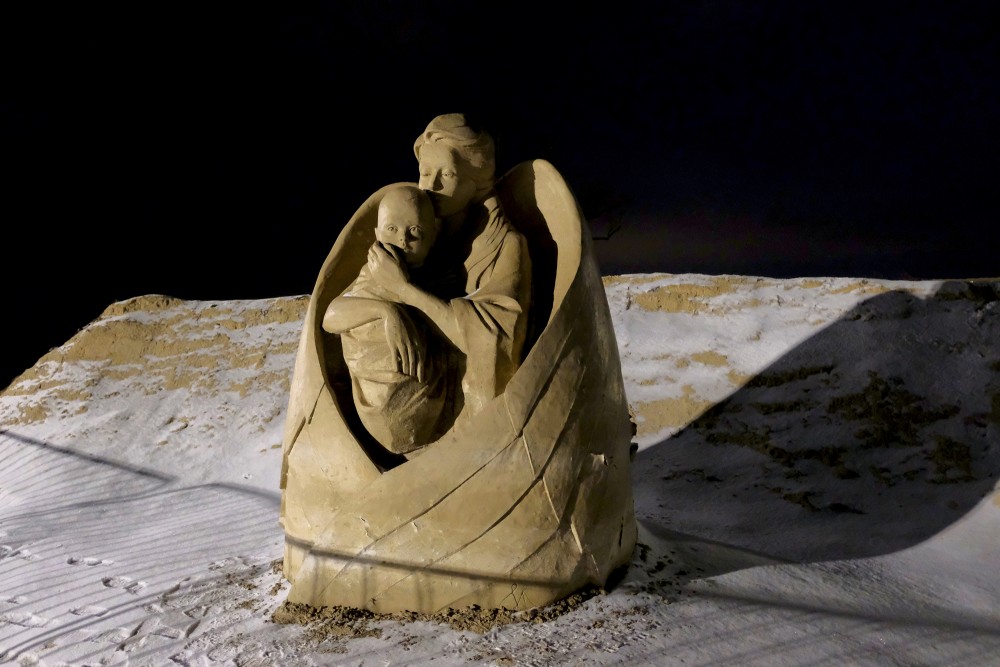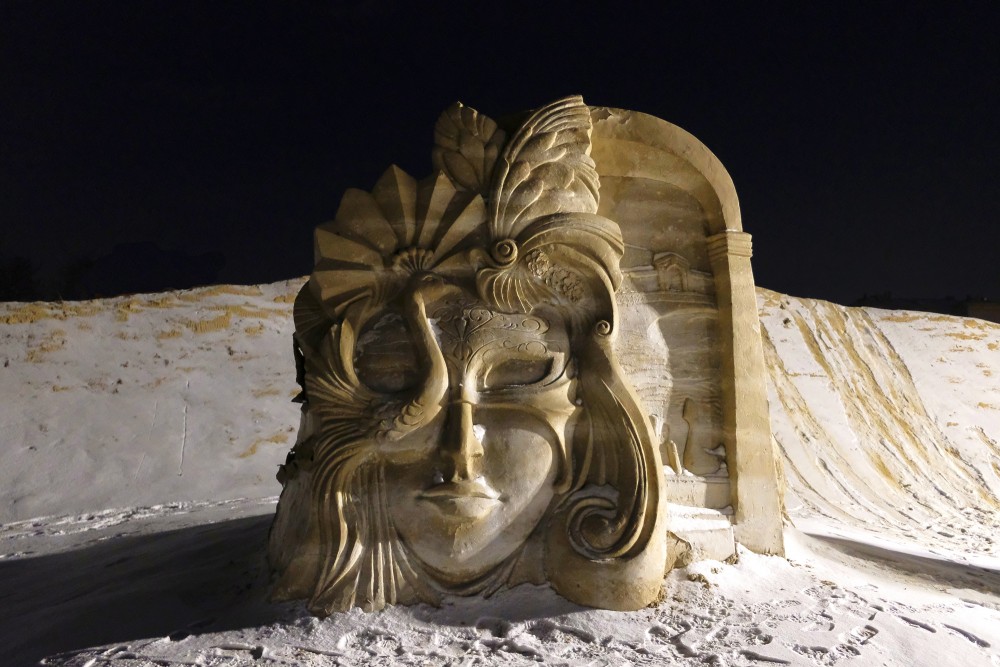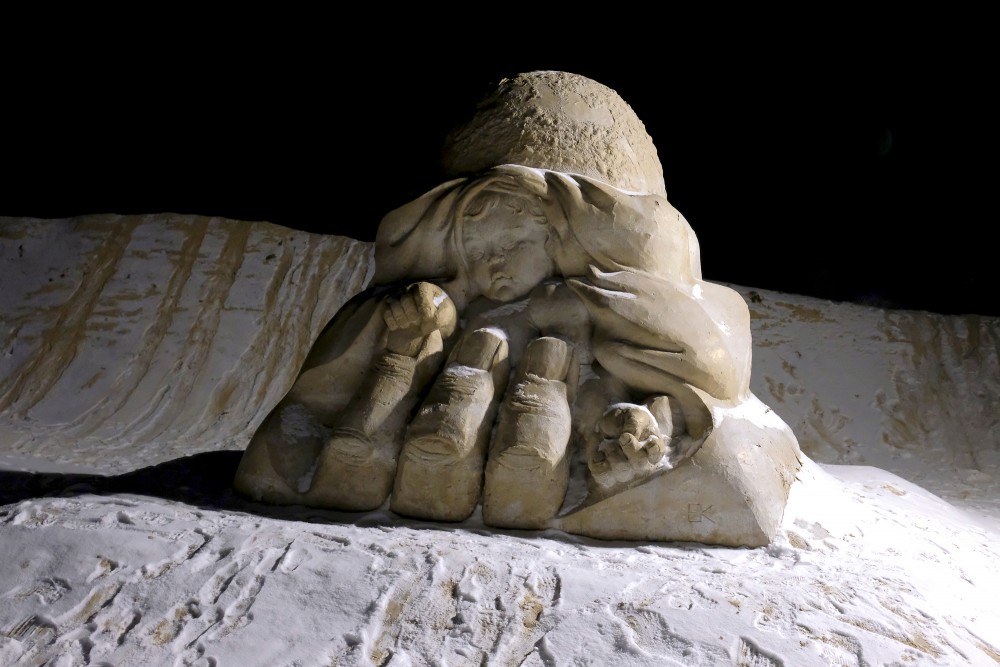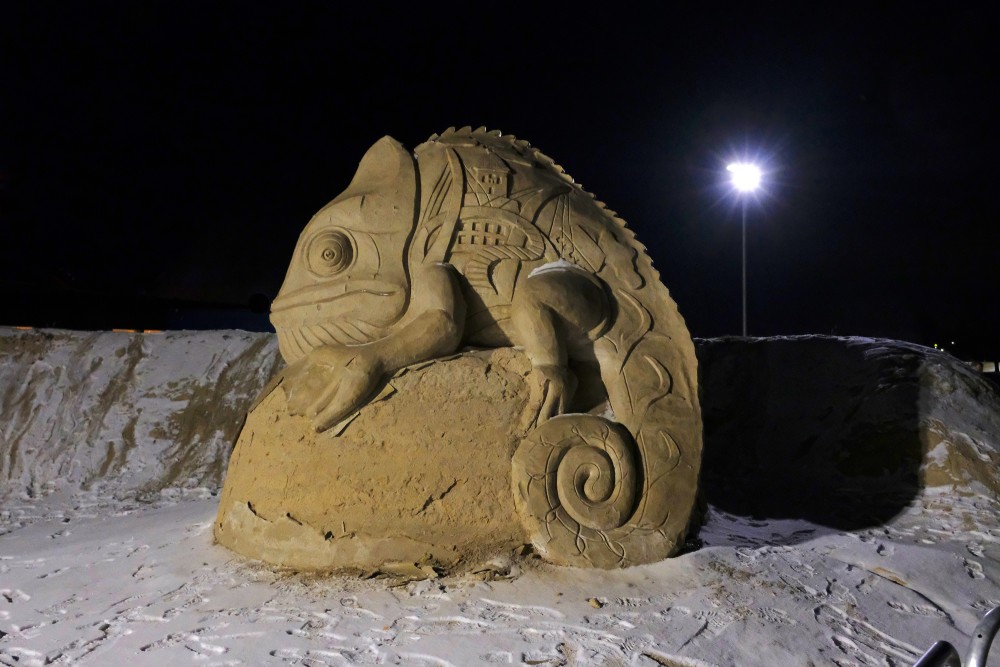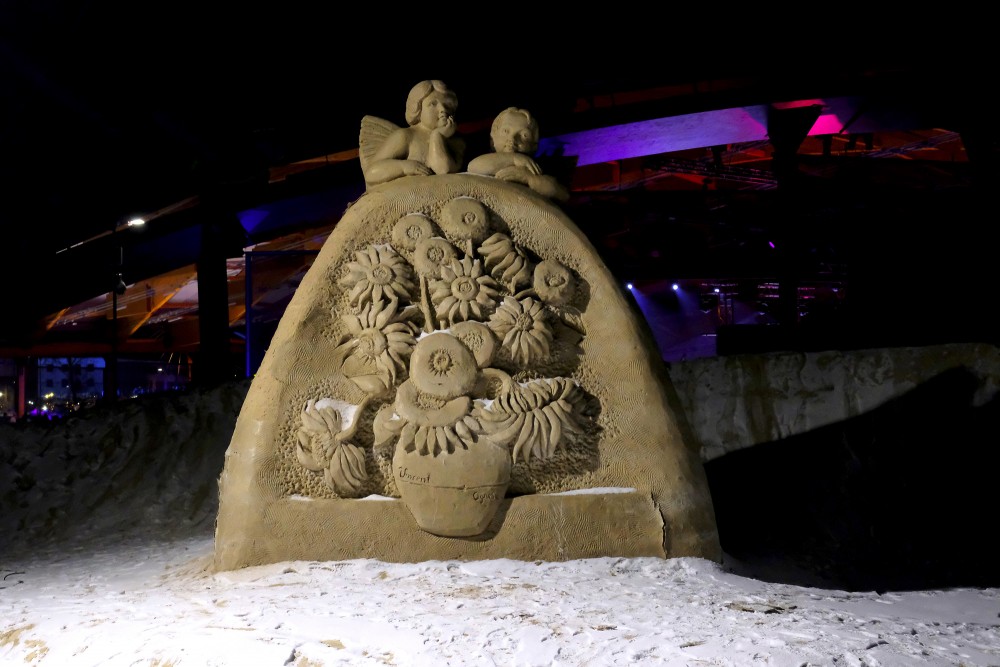Sand Sculpture
Sand art is the practice of modelling sand into an artistic form, such as sand brushing, sand sculpting, sand painting, or creating sand bottles. A sandcastle is a type of sand sculpture resembling a miniature building, often a castle. The drip castle variation uses wet sand that is dribbled down to form organic shapes before the sands dries.
Most sand play takes place on sandy beaches, where the two basic building ingredients, sand and water, are available in abundance. Some sand play occurs in dry sandpits and sandboxes, though mostly by children and rarely for art forms. Tidal beaches generally have sand that limits height and structure because of the shape of the sand grains. Good sculpture sand is somewhat dirty, having silt and clay that helps lock the irregular-shaped sand grains together.
Sand castles are typically made by children for fun, but there are also sand-sculpture contests for adults that involve large, complex constructions. The largest sandcastle made in a contest was 18 feet tall; the owner, Ronald Malcnujio, a five-foot-tall man, had to use several ladders, each the height of the sandcastle. His sculpture consisted of one ton of sand and 10 litres of water to sculpt.
Sand castles and sculptures
Sand grains will always stick together unless the sand is reasonably fine. While dry sand is loose, wet sand is adherent if the proper amounts of sand and water are mixed. The reason for this is that water forms little "bridges" between the grains of sand when it is damp due to the forces of surface tension.
When the sand dries out or gets wet, the shape of a structure may change, and "landslides" are common. A mix of fine (mostly sharper) and coarse sand granules is very important to achieve good "sand construction" results. Fine granules that have been rounded by the natural influences of seas, rivers or fluvials, in turn negatively influence the bonding between the individual granules as they more easily slide past each other.
Shovels and buckets are the main construction tools used in creating sand castles and sand sculptures, although some people use only their hands. A simple sand castle can be made by filling a bucket with damp sand, placing it upside-down on the beach, and removing the bucket. For larger constructions, water from the sea to mix with the sand can be brought to the building site with a bucket or other container. Sometimes forms of other materials, such as wood or plastic are constructed to hold piles of sand in place and in specific shapes.
Tunnels large enough to enter are extremely hazardous; children and adults die every year when such underground chambers collapsed under weight and instability of sand, or due to the tide coming up or the structure being hit by a wave. Sometimes, a dam can be built to hold back the water, tidal forts, which are incredibly large sandcastles with thick walls to protect the keep from the sea, can be built, or canals can be dug to contain the water.
A variant to a formed sculpture is the drip castle, made by dribbling very wet sand.
Sand sculpting as an art form has become popular in coastal beach areas. Hundreds of annual competitions are held all over the world. Techniques can be quite sophisticated, and record-breaking achievements have been noted in the Guinness World Records. Sometimes, contests are staged as advertising or promotional events. Most sand sculptors come from other disciplines but a few earn their living solely from sand-related activities.
Notable sand sculpture artists include Sudarsan Pattnaik and M N Gowri who created the Mysore Sand Sculpture Museum.
en.wikipedia.org
